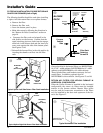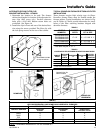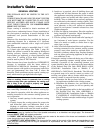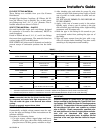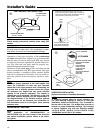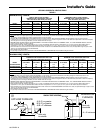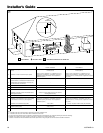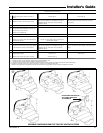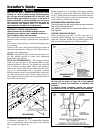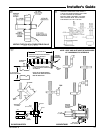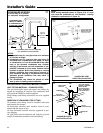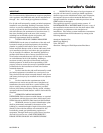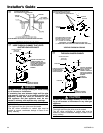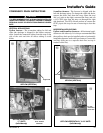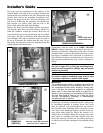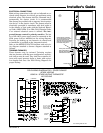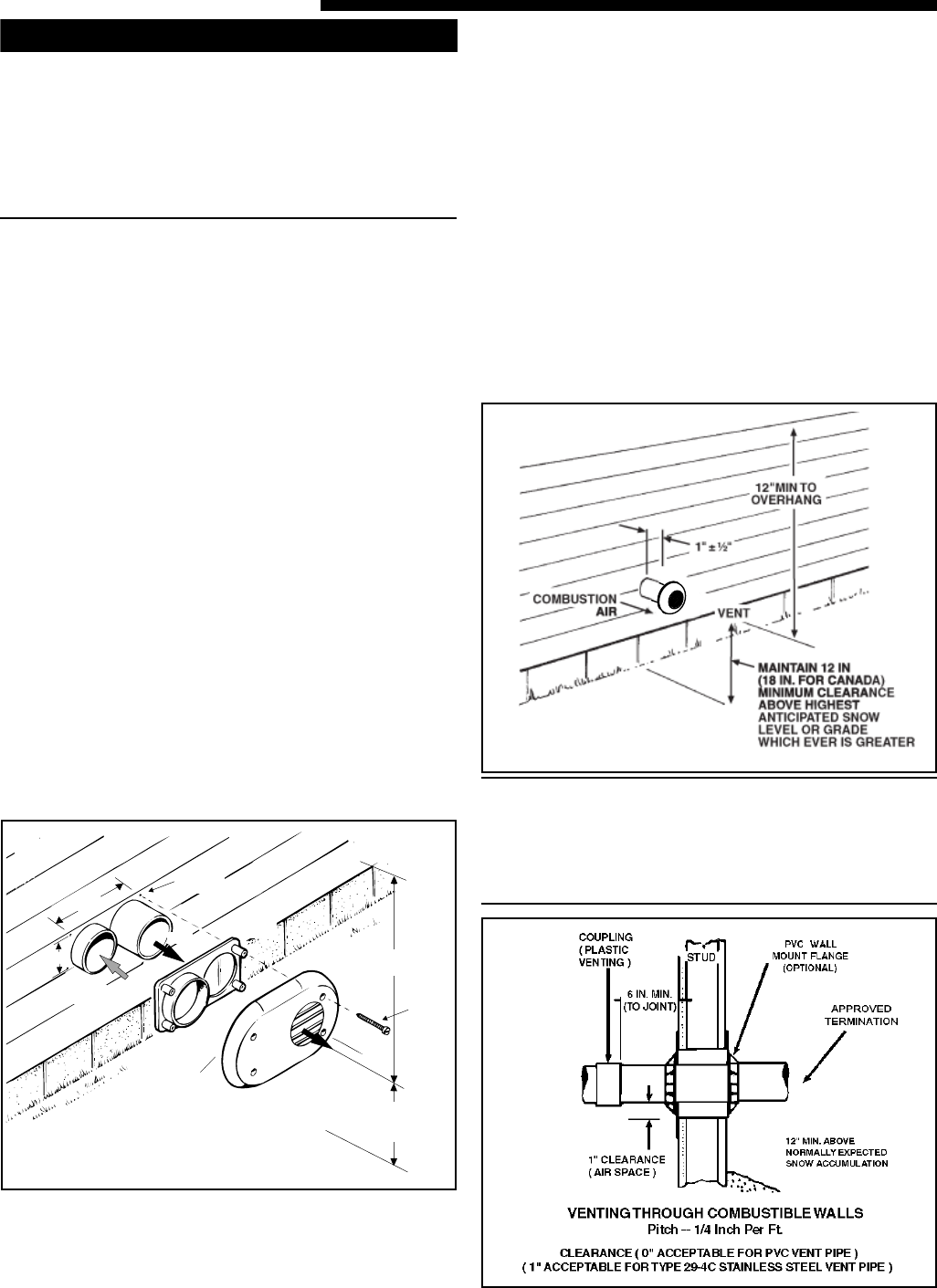
20 18-CD22D1-8
Installer’s Guide
▲
CAUTION
!
When the vent pipe is exposed to temperatures below
freezing, i.e., when it passes through unheated spaces,
etc., the pipe must be insulated with 1/2 inch (22.7 mm)
thick Armaflex-type insulation or equal. If the space is
heated sufficiently to prevent freezing, then the insula-
tion would not be required. If domestic water pipes are
not protected from freezing then it is assumed the
space meets the condition of a heated space.
HORIZONTAL VENTING THROUGH WALL
These furnaces may be installed as direct vent (as
shipped) or as nondirect vent. Installation must con-
form to national, state, and local codes.
The vent & inlet terminals must be located at least 12"
minimum above normally expected snow accumulation
level.
Avoid areas where staining or condensate drippage may
be a problem.
Location of the vent/ wind terminal should be chosen to
meet the requirements of Figure 24 for either direct or
non-direct vent applications.
PITCH – Venting through the wall must maintain 1/4"
per foot pitched upward to insure that condensate
drains back to the furnace.
FLUE GAS DEGRADATION – The moisture content
of the flue gas may have a detrimental effect on some
building materials. This can be avoided by using the
roof or chimney venting option. When wall venting is
used on any surface that can be affected by this mois-
ture, it is recommended that a corrosion resistant
shield (24 inches square) be used behind the vent termi-
nal. This shield can be wood, plastic, sheet metal, etc.
Also, silicone caulk all cracks, seams and joints within 3
feet of the vent terminal.
COMBUSTIBLE MATERIAL WALL
A minimum clearance of 1" to combustible materials
must be maintained when using single wall stainless
steel venting. See Figure 28.
Shield material to be a minimum of 24 gauge stainless
or aluminized sheet metal. Minimum dimensions are
12"x12". Shield must be fastened to both inside and out-
side of wall. Use screws or anchor type fasteners suited
to the outside or inside wall surfaces.
NONCOMBUSTIBLE MATERIAL WALL
The hole through the wall must be large enough to maintain
pitch of vent and properly seal.
Use cement mortar seal on inside and outside of wall.
See Figure 29.
VENTING THROUGH THE ROOF
When penetrating roof with a 2" PVC vent pipe, a 2"
electrical conduit flashing may be used for a weather
tight seal. Lubricate flexible seal on flashing before PVC
pipe is pushed through the seal. (Field Supplied)
NOTE:
No vent cap as shown in Figure 33 is the preferred
method for vertical vent termination in extremely cold
climates.
In extreme climate conditions, insulate the exposed
pipe above the roof line with Armaflex type insulation.
VENT
COMBUSTION
AIR
VENT
VENT
PLATE
VENT
CAP
12" MINIMUM
TO OVERHANG
MAINTAIN 12" (18" FOR CANADA) MINIMUM
CLEARANCE ABOVE HIGHEST ANTICIPATED
SNOW LEVEL OR GRADE WHICHEVER IS GREATER
SCREWS
(4 req.)
ANCHORS
(4 req.)
7.2"
3.2"
BAYVENT200B
h
j
BAYAIR30AVENTA
(Sidewall)
k



